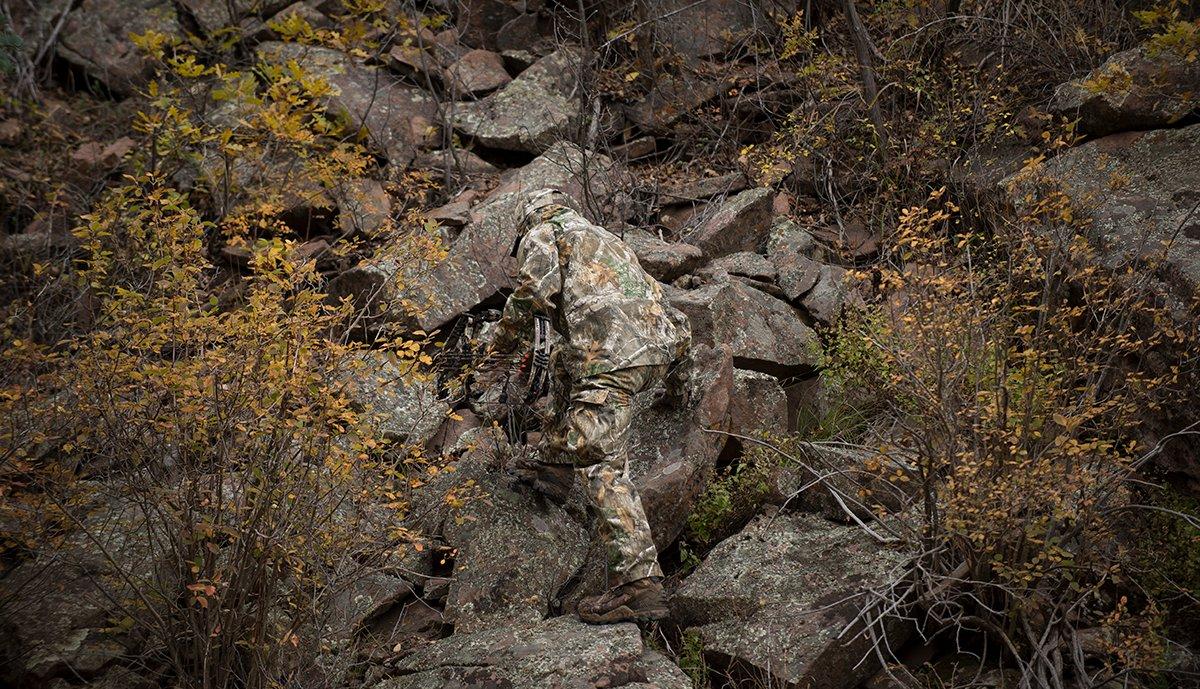Twelve fail-safe steps for sneaking up on unsuspecting deer
Most spot-and-stalk hunts for Eastern whitetails are a bust, but there are times when a stalk is your only option for filling a tag. If you need to get down out of the tree and slither into range, remember this advice.
There are certain times that are best suited for stalking deer. And few people know more about it than Mike Stroff, who is an outfitter and Realtree 365 hunting show host.
Stalking whitetails is extremely hard to pull off, Stroff said. We kill a few spot and stalk whitetails in the river bottoms. If I can spot one in a good location and have some terrain to use to get to him, we give it a try."
According to Stroff, it's best to stay vigilant and be on the lookout for these conditions when:
- You watch deer bed down from the treestand;
- You see them bed down at lower elevations;
- The terrain allows a good approach;
- There aren't other animals in the way;
- And the wind is in your favor
Always make sure the wind is right and that you can stay out of sight for as long as possible when stalking deer, Stroff said. That said, you need to be able to stop and [set up] where you can still see the deer. It becomes very difficult if you lose track of where the buck is.
Once you understand when to spot-and-stalk, then you have to know how.
Step 1: Wear Quiet Camo
The swish-swish-swish of your pants isn't going to cut it when stalking deer. You need quiet material when slipping up on wary whitetails. The best quiet camo for the money? Fleece. It's comfortable and quiet.
Step 2: Take the Necessities
Gear can be loud, especially if you're hauling a bunch of it. Shed everything you don't need during your stalk and leave it behind. You should only bring your bow, a quiver full of arrows, binoculars, and a rangefinder. Put the binos under your outer layer and the rangefinder in a chest pocket to keep them from clanking.
Step 3: Start High
You can't slip up on a deer if you don't know he's there. So start in a place with a good vantage point, and glass for bedded deer. Once you locate a target buck, don't just observe him. Look for other deer that could be bedded nearby. Map your stalk route accordingly.
Step 4: Use the Terrain
Use the landscape to your benefit. If you're working your way down, you should have the line-of-sight advantage, but don't forget to use terrain features as tools. Never skyline yourself on a hill or ridge. Seek cover in vegetation or, in barren areas, hills and ravines. Even a slight ditch or rut can help you keep a low profile as you make your approach.
Step 5: Monitor the Wind
Keep tabs on the wind throughout the entire stalk. Keep it in your face if the terrain allows. Crosswinds are okay, too.
Step 6: Continue to Assess
Stay mindful throughout the stalk. Your target deer, other critters, wind direction, and your movement are all variables that can affect the outcome. Most are out of your hands, so stay focused on what you can control: your noise level and movements. Knowing when you can move faster or slower - or if you just need to stop - at any given moment is important. Read the situation, react, repeat.
Step 7: Slow Down
Stalking deer is a painstakingly slow process. Depending on the situation, such as if you don't have much cover or deer aren't bedded favorably for a stalk, it can take a long time just to advance a few yards. The slower you move, the lower your odds of alerting the deer. Move even slower once you're inside 100 yards.
Step 8: Lose the Shoes
This is a bad idea in sand-spur country, but elsewhere, ditching your boots is a good way to reduce noise. Take them off once you're within 100 to 125 yards of your target. Wear extra-thick socks to give your feet more cushion, and don't forget where you left your boots.
Step 9: Monitor Behavior
If you can see the deer, it can probably see you. So, it's best to get as close as possible before exposing yourself visually. But once you're within sight, continue monitoring the buck's behavior. Body language is key. Recognizing when a deer is calm, on high alert, or in-between will provide clues for your next move.
Step 10: Watch for Other Deer
Keep scanning for satellite deer - and other wildlife - as you close the gap. Many stalks have been ruined by an unseen doe that spooks and flees, taking your buck with her.
Step 11: Use Your Rangefinder
It's difficult to guestimate yardage when hunkered close to the ground. Once in position, use your rangefinder to confirm the shot distance. To verify, take as many ranges as time allows. Sometimes, accidentally catching leaves, branches and blades of grass will give you false readings.
Step 12: Draw at the Right Time
Read the deer's body language. Understand the situation. Know when to pull your bow back. You don't want to draw too early and have to hold it, but drawing too late is equally damaging to your stalk, since you will likely have a short window before your buck senses trouble and runs. Once the shot opportunity is there, breathe in, exhale, and release.
Don't Miss: How Mature Bucks Use the Wind
Check out more stories, videos and educational how-to's on deer hunting.







